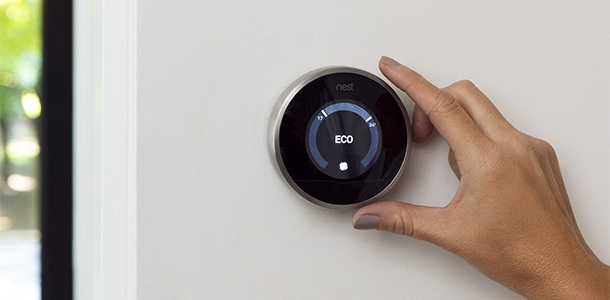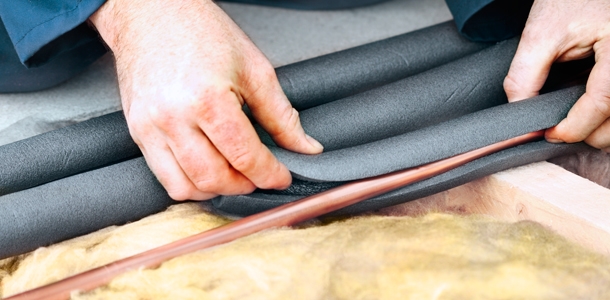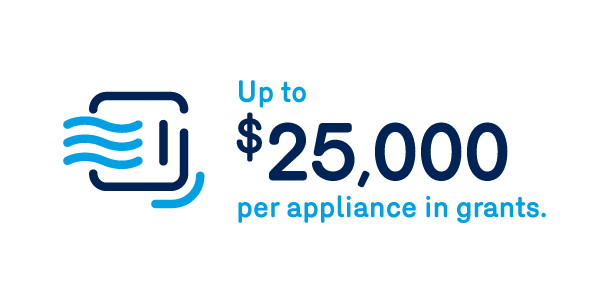Tips and advice to reduce your energy consumption
Enhancing your energy performance by consuming less is easier than you might think! More often than not, we associate energy performance with major energy equipment upgrades or renovations. In fact, you can start saving energy and lower your bill by following a few basic tips. Read this mini-guide to learn about basic energy-saving facts and discover ways to save energy.
Space heating
Saving energy means decreasing the amount required by your heating systems for air displacement (ie air propelled through ducts, registers, coils, filters, louvers, diffusers and grates) and conditioning (ie heating, humidification, dehumidification and cleaning).

Ideally performed by qualified technicians, annual maintenance of your heating equipment extends its service life and lowers your energy consumption by ensuring proper functioning and efficiency. Have the inside and outside of the exhaust shaft inspected occasionally as well for any signs of deterioration due to condensation or corrosion.
Install timers to reduce the heat when your building is unoccupied. Also, conserve heat by closing curtains, louvers and blinds at night and when the building is unoccupied. Open them during the day to take full advantage of sunlight.
Cold air and warm air have different densities above ground, and if they are not mechanically mixed in some way, they will produce stratification (ie different layers of temperature). Warm air rises and reaches the highest temperature near the ceiling, especially in rooms with high ceilings. Installing ceiling fans of a minimum clearance of 8 ft. gold 2.43 m. to redistribute warm air is a budget-friendly solution.
Survey your employees and customers to define their temperature comfort zone. You may discover that some spaces are maintained at a warmer temperature than necessary. A slight decrease in the temperature setting can generate significant savings. Setting the temperature to 17°C (62.6°F) for a vacant building and 20°C (68°F) for an occupied building can reduce the annual consumption of natural gas.
It may be less expensive to vary the interior temperature settings according to the following criteria: the occupants' activities in various locations, the seasons, humidity levels, amount of sunlight, interior air speed, and temperature zones conductive to comfort. Bear these factors in mind when defining the temperature settings for different rooms. Remember that occupants may tolerate warmer interior temperatures than what you would expect during summer, and similarly, colder room interior temperatures in winter.
Designed to optimize your comfort and peace of mind, smart thermostats are an effective way of managing your energy use. The new thermostat is connected to a Wi-Fi network, letting you control your heating and air conditioning system remotely via the Internet or a mobile app.
Heating consumption varies based on different factors that include weather conditions, the dwelling's age and size, its number of occupants and the price of fuel. Once properly programmed, your smart thermostat will help you reduce your energy consumption. Easy to use, smart thermostats adapt to the occupants lifestyle, affording comfort, flexibility and savings.
If you have a forced-air system, remove any obstacles in ducts, registers and cold-air return registers so that the air can circulate freely and efficiently throughout the system.
If you have a hot-water heating system, look for hot spots on the boiler wall and hot-water distribution pipe to identify insulation gaps. Remember, if it's too hot to touch, you are losing a lot of heat. Also check pumps and valves for water leakage.
If you're thinking of changing your space heating equipment, ask your contractor about the energy efficiency of your appliances. Efficiency is usually expressed in terms of annual fuel utilization efficiency (AFUE) for furnaces, and in terms of combustion efficiency for boilers. The higher the energy output rating, the more efficient the equipment as the less energy it consumes.
Water heating
Here are some tips to minimize energy losses caused by the heating of the water.

Insulate hot-water pipes, especially pipes that run through unheated areas. Use insulating tape or foam, plastic or fiberglass tubes which, when slit lengthwise, fit snugly around the pipe and can even be permanently glued.
Lower the temperature of the hot-water heater thermostat to 60°C (140°F). Set up flow restrictors and efficient showerheads to reduce hot water consumption. During an 11-minute shower, without a flow restrictor, you consume an average of 125 litres (27.4 gallons) of water. A flow restrictor can significantly reduce consumption to 77 litres (16.9 gallons), a saving of about 48 litres (10.6 gallons) per shower.
Draining your water heater once a year will eliminate deposits at the bottom of the tank, thus decreasing the cost of equipment replacement and repairs, as well as energy consumption. It is not necessary to drain the entire tank, simply run the drainage water into a recipient until it is clear and free of all deposits.
If you consider changing your hot-water heaters, ask your contractor about the energy efficiency of new appliances. For hot-water heaters, efficiency is usually expressed in terms of energy factor (EF). The higher the energy output rating, the more efficient the appliance is as the less energy it consumes. For example, you might choose a hot-water heater with an energy factor of 60 instead of 54.
Building shell
The building shell consists of the roof, floor, walls, windows and doors—everything that separates the inside of your building from the outside. The quality of the building The building shell consists of the roof, floor, walls, windows and doors — everything that separates the inside of your building from the outside.

Although reinsulating an existing building is not usually cost-effective, a major renovation may provide a good opportunity to enhance the insulation. Poorly insulated but accessible roof spaces are one example.
Inspect the condition of the weather-stripping in all openings, as it may deteriorate over time. Also check air-tightness between door or window frames and the building, since this is usually where the greatest infiltration of cold air occurs. Caulking can eliminate infiltration.
Adding a layer of selective plastic film to your windowpane will significantly block infrared rays from passing through the window and prevent heat from entering or exiting through radiation. Installed on ordinary glass, selective film can nearly double the resistance of single-glazed windows. Liners let you avoid the high cost of changing single-glazed windows to double-glazed windows.
Made of transparent or rubber strips, strip curtains should be installed wherever there is heavy traffic to and from areas with different temperatures, such as storeroom and garage. Installing strip curtains can decrease climate transfer between the two areas.
Storm windows and doors are designed to increase the heat resistance of a window or a door and to decrease infiltration. In many cases, installing them can be more economical than changing the existing windows or doors.
Setting up mechanisms that open and close doors more quickly will minimize transfer time and heat transfer when opening garage doors. If the doors must remain open for unloading, strip curtains or sealing pads can be set up between the vehicle and the building to decrease air transfers.
High efficiency equipment
Get a grant when choosing high efficiency equipment
Énergir offers a grant up to $25,000 to encourage its customers to be more energy wise. The total value of the grant is based on the selected unit's capacity and is subject to certain conditions.

Questions?
We have answers.
Have questions or want more information on natural gas? Contact our team.